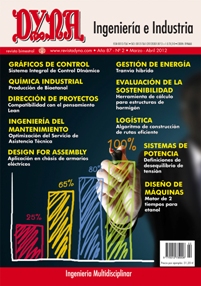DESIGN OF A NEW TWO STROKE ENGINE THAT USES ETHANOL AS FUEL
Keywords:
motor de explosión, etanol, ciclo termodinámico de 2 tiemposAbstract
Currently, most single or multi-cylinder internal combustion engines mounted on commercial vehicles are based on the Crankshaft-Rod-Piston mechanism. This mechanism allows the piston both to rotate with respect to the rod and to friction with the walls of the cylinder as it moves inside. The friction between the piston and the walls of the cylinder may cause excessive wear inside the cylinder or on the piston itself, and in the worst of cases, a binding (or seizure) of the piston in its path.In order to reduce wear and avoid undesirable seizure, the engine requires efficient lubrication circuits, which should provide a long lasting lubricating film between the cylinder walls and the piston. This article shows the design of a new combustion engine that replaces the traditional Crankshaft-Rod-Piston mechanical system (in which the piston moves with alternative rectilinear motion) with a system in which the piston moves with alternative circular motion. In this new system, the piston is jointly attached to the rod in such a way that it eliminates rotation and avoids contact with the inner walls of the cylinder. This restriction on rotation reduces both the wear of the piston and cylinder as well as lubricating oil consumption. The designed motor runs with ethanol, and the thermodynamic cycle is that of a two-stroke engine. In this engine, the air-fuel mixture intake is made by side lights, while a valve located at the top of the hemispherical combustion chamber is used for the exhaust of combustion gases.Downloads
Published
2012-03-07
Issue
Section
ARTICULOS

